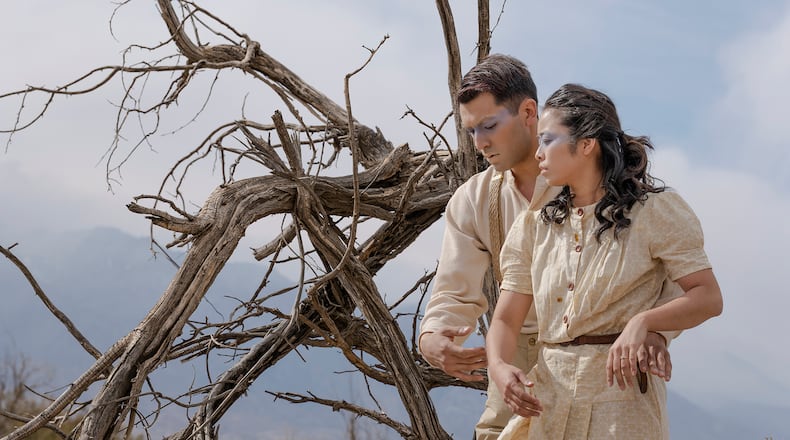The pointe shoe, the camera, the hologram — these are a few technologies that have developed hand in hand with dance. This fall, dance artists are using technologies in new ways to connect with audiences and create visions of a better future. Another common thread this season: the topic of migration.
“Images of Life”
On this double bill, Ballethnic Dance Company’s “Jazzing: Memoirs in Jazz” draws inspiration from photojournalist Herb Snitzer’s images of American jazz legends taken during the 1950s and the civil rights era. Created in collaboration with the Breman Museum, choreographer Waverly Lucas’ work incorporates Snitzer’s voice and photos as dancers interpret works by Duke Ellington, Nina Simone and others alongside live music performed by Adam McKnight. The program also features “Sanctity,” which Ballethnic performed last year at Washington, D.C.’s Kennedy Center as part of a national celebration of Black artists in ballet.
Aug. 25-27. Alliance Theatre, 1280 Peachtree St. NE, Atlanta. 404-733-4600. alliancetheatre.org
“Sankei”
Stories of Japanese-Americans who were illegally incarcerated during World War II are fading. Yayoi Kambara, artistic director of the San Francisco-based company Kambara+, amplifies those stories through a trio of works, beginning with an immersive performance of “IKKAI Means Once: A Transplanted Pilgrimage,” comprising poetry, dance and music that blend traditional Japanese and contemporary elements. For six weeks following the performance, visitors can experience the work’s themes of ancestral joy, historical trauma and community resilience through the film “Out of the Dust” and the interactive, mixed reality installation “NI DO TO: An XR Pilgrimage.” Presented by Georgia Tech Arts.
“IKKAI” Sept. 16. “Out of the Dust” and “NI DO TO” Sept 18-Oct. 27. Ferst Center for the Arts, 349 Ferst Drive NW, Atlanta. 404-894-9600. arts.gatech.edu
“La Sylphide”
The pointe shoe — combined with gas lights, diaphanous white tutus and a buoyant new ballet technique — formed the nexus of innovation in 19th century Romantic ballet, setting the stage for stories exploring realms of dreams and the supernatural. Atlanta Ballet will present the work that first brought it all together. Set in the mist-shrouded Scottish Highlands, a young man falls under the spell of an otherworldly sylph, a symbol of unattainable love. Choreographer Johan Kobborg has restaged his version based on the original 1836 Royal Danish Ballet production.
Sept. 15-17. Cobb Energy Performing Arts Centre, 2800 Cobb Galleria Parkway, Atlanta. 800-982-2787. atlantaballet.com
“Out of the Box”
When Terminus Modern Ballet Theatre lost its studio home in West Midtown, the artists bounced back, moving to a larger space in the Buckhead neighborhood’s Tula Art Center. This fall, Terminus will open an intimate White Box Theatre there with a new series featuring premieres by Terminus co-founder Rachel Van Buskirk and Atlanta Ballet dancer Darian Kane, alongside a work-in-progress by Shane Urton of the Royal Ballet of Flanders. Three new company members, including former Atlanta Ballet dancer Georgia Dalton, will also debut.
Sept. 23-24, Sept. 30, Oct. 1. White Box Theatre, Tula Art Center, 75 Bennett St., Atlanta. 404-446-0510. terminusmbt.com
“Ararat”
Named after the mountain in Turkey where Noah’s ark is said to have landed, George Staib’s tensely driving work springs from stories of Armenians who survived genocide in that region during the early 1900s. Staib delves into his personal history with the resulting Armenian diaspora, grappling with questions of cultural identity, notions of “place” and the resilience that comes from self-reinvention. Greg Catellier’s lighting and set designs merge with Milton Cordero’s projections while Ben Coleman performs his original score on stage with Staib’s company.
Oct. 26-28. Schwartz Center for Performing Arts at Emory University, 1700 N. Decatur Road, Atlanta. 404-727-5050. boxoffice@emory.edu
About the Author
Keep Reading
The Latest
Featured


